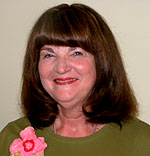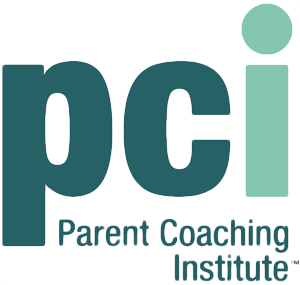Please Put Down the Remote and Pick Up the Children's Books

by Barb Bushey
MA in Early Childhood Education
Elementary Teacher for 37 years
PCI Certified Parent Coach® and PCI Instructor
Co-author with Carleen Glasser of
My Quality World Workbook for Early Childhood
Member of the William Glasser Faculty
As parents, we have long known the benefits of reading to our children. In this day and age with media bombarding us at every turn, reading to our children is even more important than when we were growing up.
A few of the academic benefits for your children when we read to them are: helping to build their vocabularies, both reading and speaking; improving and developing reading skills such as rhyming words, letter sounds, left to right progression, and sequencing; and assisting in developing a life-long love of reading. We need to read to our children for the sheer enjoyment of sharing stories.
I believe all of the benefits stated above are important, but even more important are the life skills our children learn when being read to by parents or caring adults. Reading fosters the development of a positive relationship between parent and child. Socially, emotionally and academically, it is far better for the child to be interacting with a person and a book than sitting in front of an emotionless, nonresponsive screen. Reading to our children provides them the opportunity to develop a better understanding of their emotions and feelings when relating to the characters in the story. Story time gives your children a safe place and time to ask questions. Stories open opportunities for your children to develop their imagination and creativity. Story time is a time when parents can teach family values and assist their children with difficulties the children may be experiencing in developing these values.
We all want our children to be happy, successful, and caring adults. We have morals and values that we hope our children will embrace. Some of these are: trustworthiness, honesty, sense of responsibility, self-discipline, integrity, compassion, respect for themselves and others, fairness, cooperation, perseverance, contributing member of society (good citizen), courage of their convictions and beliefs, pride in themselves, kindness and caring for themselves and others, patience, initiative, and the ability to develop healthy, caring relationships with others. As you read this list, you may have other morals and values to add. Our responsibility to help our children develop these values can sometimes seem overwhelming, but we can model these values for our children every day in what we do and say. We can read children's literature that reinforces these values and morals, and we can use the literature to help our children in a loving, caring, respectful way when they are having difficulties with one of these morals or values.
As a parent and teacher, I found that reading a story that highlighted a value was very effective in teaching that value, and it was one of the keys to positive, effective discipline. Let me cite an example. I believe every child has difficulty learning to not say unkind things to others. One of the main reasons for this is that we teach our children to be honest and young children, in their honesty, unknowingly say something that is true, but not kind. Older children may use this as an excuse for what they said, but will actually say unkind things on purpose. So, I read the story Charlie the Caterpillar by Dom DeLuise. This is the story of a little caterpillar that no one will play with, because they think he is ugly, and they tell him this is the reason they do not want to play with him. However, when he turns into a butterfly, everyone wants to play with him because he is beautiful.
While reading the story, I stopped after one of the animals had called the caterpillar ugly and asked:
- "What just happened in the story?"
- "What did the monkey (or name of character in the story you are reading) do?"
- "Do you think the monkey (or name of character in the story you are reading) should have called the caterpillar ugly (or action of the character in the story you are reading)?"
- "How do you think the caterpillar (or name of character in the story you are reading) feels?"
- "How would you feel?"
At the end of the story, I asked:
- "Have you ever done what the monkey (or name of character in the story you are reading) did?"
- If the child replies yes, because he/she has done it, then the next question asked is: "What would have been a better thing to do or say?" (Young children may need suggestions as to what is a better thing to do or say.)
- If the child replies no, but you know your child has done this, remind them of the incident. "Remember the time you said or did_____________? What would be a better thing to do or say?"
- You might also ask your child if there is anything you can do to help them remember what they are going to do or say.
(Questions adapted from My Quality World-Early Childhood, pp. 29-38.)
By utilizing a story in the above manner, you are giving your child a safe place to take responsibility for what he/she has done. You are allowing the child to see that he/she is not the only one that has done this, and you are empowering the child to make a plan that he/she thinks will be better. When we as adults or children develop a plan, we take ownership of it and are more willing to change our actions. Above, in parenthesis, I have suggested how these questions can be used with any book you are reading to your child. These same questions can also be used with other values you wish to help your child develop. If your child is not having a problem developing a value, and you just wish to have a conversation with your child about a specific value or moral, it is not necessary to ask the questions at the end of the story.
I hope that you will find, as I did, that not only is this an effective method to assist children, but that it results in more cooperation from your child, because you have been respectful to your child and your child has participated in the process to effectively change his/her behavior.
Reference
Glasser, C. and B. Bushey. 1996. My Quality World adapted for Early Childhood. Chatsworth, CA: William Glasser,Inc. www.wglasser.com.
Barbara J. Bushey, PCI Certified Parent Coach® and PCI Instructor. Barb is a retired elementary teacher who has always loved children's literature. She is now a PCI Certified Parent Coach® and often suggests to parents that using children's literature can be a valuable tool in parenting. You can reach her at (248) 446-3704 or at dirbar@ameritech.net.
Copyright © 2009 Barbara J. Bushey, all rights reserved. Used with permission.
